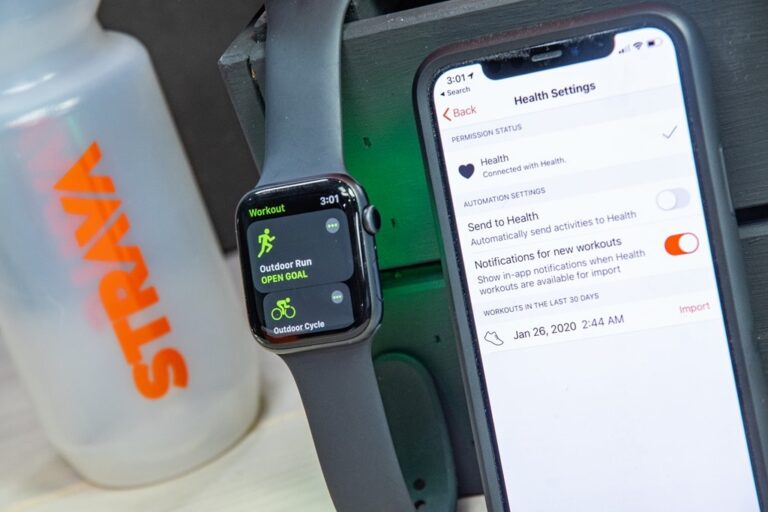What is a Good Ftp Score Peloton: Expert Tips
A good FTP score on Peloton is one that is accurate and ensures that you are getting the most out of your hard work. It is important to measure your Functional Threshold Power (FTP), which represents the highest average power you can maintain for one hour.
By knowing your FTP score, you can gauge your fitness level, set realistic goals, and track your progress over time. Whether you are a beginner or an experienced cyclist, having a good FTP score is essential for improving your performance on the bike.

Credit: www.bicycling.com
Understanding Ftp Score On Peloton
Fitness enthusiasts and cycling enthusiasts around the world have turned to Peloton for an immersive and challenging workout experience. One of the key metrics that Peloton riders need to understand is their FTP score. In this article, we will delve into the definition and importance of FTP score on Peloton, as well as how it impacts your workouts. Let’s dive in!
Definition and Importance of FTP Score
FTP, or Functional Threshold Power, is a measurement of the highest average power output that a cyclist can sustain for one hour. It is a crucial metric in the world of cycling as it helps riders gauge their fitness level and tailor their workouts accordingly.
The FTP score is expressed in watts, and it provides valuable insights into your aerobic fitness and endurance capabilities. By knowing your FTP score, you can effectively plan and monitor your training sessions to maximize your performance.
How it Impacts Your Peloton Workouts
Understanding your FTP score on Peloton is essential for optimizing your workouts and achieving your fitness goals. Here’s how it impacts your Peloton experience:
- Personalized Training Zones: Your FTP score forms the basis for determining your individualized training zones. These zones, ranging from easy to maximum effort, help you push yourself appropriately during different types of workouts, such as endurance rides, intervals, and power-based sessions.
- Progress Tracking: By regularly assessing your FTP score, you can track your progress over time. Improvements in your FTP indicate increased fitness and enhanced cycling performance.
- Effective Goal Setting: Knowing your FTP score allows you to set realistic and achievable goals. Whether you aim to increase your average power output or complete more challenging rides, understanding your baseline FTP score helps you set milestones that align with your capabilities.
- Training Efficiency: With your FTP score in mind, you can plan and structure your workouts more effectively. By incorporating training sessions that target specific power zones, you can optimize your training time and make significant fitness gains.
- Competition and Challenges: If you enjoy participating in virtual races or Peloton challenges, your FTP score serves as an essential benchmark. It allows you to gauge your competitiveness and compare your performance against other riders.
Now that you have a better understanding of what an FTP score is and its significance in your Peloton workouts, it’s time to embrace this metric and use it as a tool to take your fitness to new heights.
Factors To Consider When Assessing Ftp Score
Factors to Consider when Assessing FTP Score When it comes to assessing your FTP (Functional Threshold Power) score on Peloton, there are several factors that you should take into consideration. Your FTP score is a measure of your maximum sustainable power output over a given period of time, usually measured in watts. It is an important metric that can help you gauge your fitness level and track your progress over time. In order to accurately assess your FTP score, you need to consider factors such as your training history and experience, the types of Peloton classes you prefer, and your age and fitness level.Training History and Experience
Your training history and experience play a crucial role in determining your FTP score. If you are new to endurance sports or structured training, your FTP score may be lower compared to someone who has been training consistently for a longer period of time. Beginners usually have lower FTP scores as their muscles and cardiovascular system are not fully adapted to the demands of high-intensity exercise. On the other hand, experienced athletes who have been training for years are likely to have higher FTP scores due to their enhanced fitness level and physiological adaptations.Types of Peloton Classes You Prefer
The types of Peloton classes you prefer can also impact your FTP score. Peloton offers a variety of classes, including endurance rides, power zone rides, HIIT rides, and more. Endurance rides focus on developing your aerobic capacity and improving your endurance, while power zone rides aim to increase your sustainable power output. HIIT rides, on the other hand, focus on short bursts of intense effort followed by recovery periods. The type of classes you choose to participate in can influence the specific energy systems targeted during your workouts, which in turn can affect your FTP score.Age and Fitness Level
Age and fitness level are important considerations when assessing your FTP score. As we age, our maximum sustainable power output tends to decline due to natural physiological changes. Additionally, individuals with higher levels of fitness typically have higher FTP scores compared to those who are less fit. Fitness level can be influenced by factors such as regular exercise, overall health, body composition, and genetic predispositions. Therefore, it is important to take into account your age and fitness level when assessing your FTP score. In conclusion, assessing your FTP score on Peloton involves considering various factors such as your training history and experience, the types of Peloton classes you prefer, and your age and fitness level. By taking these factors into account, you can better understand your current fitness level, set realistic goals, and track your progress over time. Remember, your FTP score is not a static measurement and can be improved through consistent training and dedication.Determining Your Ideal Ftp Score
If you’re serious about your cycling performance and training, understanding your Functional Threshold Power (FTP) score is crucial. FTP is the highest average power output you can sustain for one hour, and it serves as a benchmark for determining your training zones and setting realistic goals.
How to perform an FTP test on Peloton
Performing an FTP test on Peloton is a straightforward process that will provide you with valuable information about your current fitness level. Here’s how to do it:
- Select an FTP test workout from the Peloton app or website.
- Warm-up for at least 10 to 15 minutes to prepare your body for the effort.
- Follow the instructor’s cues and instructions throughout the test.
- During the test, you’ll be cycling at a high intensity for a sustained period of time. Pace yourself and try to maintain a consistent effort.
- Once the test is complete, your Peloton bike will calculate your FTP score based on your performance.
Remember, it’s important to give your best effort during the test to get an accurate FTP score. Don’t be discouraged if your initial score is lower than expected – it’s a starting point for your training journey.
Interpreting your test results
After completing the FTP test, you’ll be presented with your FTP score on the Peloton bike. This score is a reflection of your current fitness level and will help you determine your training zones.
The higher your FTP score, the more power and endurance you have on the bike. It means you can sustain a higher effort for a longer period of time. On the other hand, a lower FTP score indicates that you may need to work on building your aerobic capacity and overall fitness.
It’s important to remember that FTP scores can vary widely among individuals. Factors such as age, fitness level, training history, and genetics all play a role in determining your FTP score. So, don’t compare your score to others – focus on improving your own performance.
Setting realistic goals based on your FTP score
Setting realistic goals based on your FTP score is essential for progress and improvement. Here’s how you can do that:
- Use your FTP score to determine your training zones. Different intensity levels will elicit specific physiological adaptations, so training in the appropriate zone is important for targeted improvements.
- Set short-term and long-term goals based on your current FTP score. Whether it’s increasing your FTP by a certain percentage or achieving a specific power output, having clear objectives will keep you motivated and focused.
- Work with a coach or utilize training programs designed for your specific goals and FTP score. Structured training plans can help you optimize your training and make the most of your FTP score.
- Regularly retest your FTP to track your progress and adjust your training zones and goals accordingly. As your fitness improves, your FTP score will likely increase, and you can continue pushing your limits.
Remember, progress takes time and consistency. Don’t get discouraged if improvements are gradual – every small step counts on your journey towards achieving your cycling goals.
Improving Your Ftp Score
Effectively Training to Increase FTP Score
In order to improve your FTP score on Peloton, it is important to train effectively and efficiently. Training with a specific focus on increasing your FTP score will help you see significant improvements in your performance on the bike.
Here are some tips for effectively training to increase your FTP score:
- Vary your workouts: Incorporate a mix of interval training and endurance rides into your training routine. Interval training involves alternating between high-intensity efforts and recovery periods, which can help improve your aerobic capacity and power output. Endurance rides, on the other hand, focus on longer, sustained efforts at a moderate intensity, helping to build your overall stamina.
- Set specific goals: Establish realistic and achievable goals for your FTP score and track your progress over time. By setting specific benchmarks, you can monitor your improvement and adjust your training accordingly. Celebrate small victories along the way to stay motivated and committed to your training plan.
- Follow a structured training plan: Consider working with a certified cycling coach or utilizing training programs available on Peloton to ensure you are following a structured and progressive training plan. These plans will help you optimize your workouts and target the specific areas that will contribute to increasing your FTP score.
- Focus on quality over quantity: It’s not just about logging more miles or hours on the bike. Instead, prioritize the quality of your workouts by incorporating focused efforts, such as threshold intervals or hill repeats. These targeted workouts will challenge your body and stimulate adaptations that will translate to improvements in your FTP score.
- Allow for proper recovery: Rest and recovery are crucial for making progress and preventing overtraining. Listen to your body and incorporate rest days into your training plan. Adequate sleep, proper nutrition, and active recovery exercises, such as foam rolling or stretching, can also contribute to an improved FTP score.
Incorporating Interval Training and Endurance Rides
Interval training and endurance rides are two key components of effective training to increase your FTP score on Peloton. By incorporating these types of workouts into your training routine, you can target different energy systems and improve your overall cycling performance.
Interval training involves alternating between periods of high-intensity efforts and recovery periods. This type of training helps to push your body to its limits and improve your anaerobic capacity. By repeatedly exposing your body to high-intensity efforts, you will increase your lactate threshold and improve your ability to sustain higher power outputs.
Endurance rides, on the other hand, focus on longer, sustained efforts at a moderate intensity. These rides help to build your aerobic capacity and improve your overall stamina. By consistently performing endurance rides, you can increase your body’s ability to efficiently utilize oxygen and fuel, allowing you to sustain higher power outputs over time.
Tracking Progress and Re-testing FTP Regularly
Tracking your progress and re-testing your FTP regularly is essential for monitoring your improvement and adjusting your training plan accordingly. By re-testing your FTP, you can accurately gauge your current fitness level and set new goals for further improvement.
To track your progress effectively, consider the following:
- Perform regular FTP tests: Aim to re-test your FTP every 4-6 weeks to accurately measure your progress. Peloton offers FTP-specific workouts that can help you determine your current FTP and track changes over time.
- Record your results: Keep a record of your FTP scores and other performance metrics, such as average power output and heart rate, after each test. This will allow you to visually track your progress and make adjustments to your training plan as needed.
- Analyze your data: Utilize the data and metrics provided by Peloton to analyze your performance during FTP tests and training rides. Look for patterns and trends in your data to identify areas of improvement or areas that may need more attention in your training plan.
- Adjust your training plan: Based on your test results and data analysis, make necessary adjustments to your training plan. This may involve increasing the intensity or volume of your workouts, incorporating new types of workouts, or modifying your recovery routine.
By consistently tracking your progress and re-testing your FTP, you can ensure that your training plan is effective and specific to your goals. This will help you continue to make improvements in your FTP score over time.
Peloton Ftp Score Vs. Average Ftp For Cyclists
Understanding the difference between Peloton FTP and traditional FTP
When it comes to measuring cycling performance, the Functional Threshold Power (FTP) score is a crucial metric. It represents the highest average power output an athlete can sustain for an extended period of time. Traditionally, FTP has been determined through a laboratory test that involves riding at maximum effort for around an hour. However, with the rise of at-home cycling platforms like Peloton, there is now a new way to measure FTP.
Peloton FTP score is determined through an FTP test that is conducted on the Peloton bike. This test is similar to the traditional FTP test in that it requires riders to give their maximum effort for a set duration. However, instead of an hour-long test, the Peloton FTP test lasts for 20 minutes. The test measures the average power output during this period, and the result is used to calculate the rider’s FTP score.
Comparing Peloton FTP scores to average scores in cycling
If you are a Peloton rider, you may be wondering how your FTP score compares to the average scores in the cycling community. While it is difficult to determine an exact average FTP score for all cyclists, there are some general guidelines that can give you an idea of where you stand.
According to various sources and discussions among cyclists, a good FTP score for an amateur cyclist is typically around 3.2 watts per kilogram (W/kg) or higher. This means that if you weigh 70 kilograms, your FTP score should be around 224 watts or higher. Of course, these are just rough estimates, and individual performance can vary depending on factors such as age, training history, and genetics.
When comparing Peloton FTP scores to the average scores in cycling, it’s important to keep in mind that the method of measurement may differ. Peloton FTP tests are conducted on a stationary bike with its own unique resistance system, while traditional FTP tests are often conducted on a road bike or a bike fitted with a power meter. This means that the power outputs may not be directly comparable. However, with consistent testing on the same bike, you can monitor your progress and set goals based on your own performance.
It’s worth noting that the Peloton community is diverse, consisting of riders of all fitness levels. So, don’t get too caught up in comparing your FTP score to others. Instead, focus on improving your own performance over time by setting personalized goals and following a structured training plan.
Expert Tips For Maintaining A Good Ftp Score
A good Functional Threshold Power (FTP) score is essential for measuring your cycling performance and ensuring that you are making progress in your training. Whether you’re a Peloton enthusiast or a beginner cyclist, maintaining a good FTP score requires a combination of proper nutrition and hydration, cross-training and incorporating strength workouts, and listening to your body to avoid overtraining. In this section, we will delve into expert tips for optimizing your FTP score to achieve your fitness goals.
Proper nutrition and hydration for optimal performance
Proper nutrition and hydration play a crucial role in maximizing your FTP score and overall cycling performance. Fueling your body with the right nutrients before, during, and after your rides is key to maintaining energy levels and avoiding fatigue. Here are some expert tips to consider:
- Stay hydrated: Drink plenty of water before, during, and after your rides to prevent dehydration. Hydration helps maintain optimal muscle function and endurance.
- Eat a balanced diet: Focus on consuming a variety of nutrient-dense foods, including carbohydrates, proteins, and healthy fats, to provide your body with the fuel it needs for optimal performance.
- Time your meals: Eat a balanced meal containing carbohydrates and protein 2-3 hours before your rides to ensure sufficient energy stores. Additionally, consider having a small snack 30-60 minutes before your workout for an extra boost.
- Recover properly: After your rides, replenish your body with a combination of carbohydrates and protein to promote muscle recovery and growth.
Cross-training and incorporating strength workouts
Cross-training and incorporating strength workouts into your training regimen can greatly improve your FTP score. It helps build overall endurance, strength, and power, which are crucial for sustained performance on the bike. Here are some expert tips to consider:
- Include strength training: Incorporate strength exercises targeting major muscle groups, such as squats, lunges, deadlifts, and core workouts, into your weekly routine.
- Engage in cross-training activities: Mix up your training by participating in activities like swimming, running, or yoga. Cross-training helps prevent overuse injuries and keeps you mentally engaged.
- Focus on functional movements: Choose exercises that mimic cycling movements and engage the same muscle groups to improve your cycling-specific strength and power.
Listening to your body and avoiding overtraining
To maintain a good FTP score, it’s crucial to listen to your body and avoid overtraining. Pushing yourself too hard without adequate recovery can lead to plateaus or even regression in performance. Here are some expert tips to consider:
- Take rest days: Rest days are just as important as training days. Allow your body time to recover and adapt to the stress of training.
- Monitor your fatigue levels: Pay attention to signs of excessive fatigue, such as difficulty sleeping, persistent muscle soreness, or decreased motivation. Adjust your training intensity or volume accordingly.
- Gradually increase training load: Avoid sudden increases in training volume or intensity. Gradual progression allows your body to adapt and minimize the risk of injuries.
- Listen to your body: If you’re feeling excessively tired or experiencing unusual pain or discomfort, don’t hesitate to take a break or seek professional advice.
In conclusion, maintaining a good FTP score requires a holistic approach that encompasses proper nutrition and hydration, cross-training and incorporating strength workouts, and listening to your body. By implementing these expert tips, you can optimize your cycling performance and achieve your fitness goals.
Common Misconceptions About Ftp Score On Peloton
Addressing Misconceptions about FTP Score Accuracy
There are several common misconceptions about the accuracy of FTP scores on Peloton. Let’s address some of these misconceptions and provide clarity on the matter.
Debunking Myths about the Importance of FTP Score
Many people often overestimate the importance of the FTP score on Peloton. Let’s take a closer look at some of these myths and debunk them:
Myth: FTP score is the sole indicator of fitness level
Contrary to popular belief, the FTP score is not the only measure of one’s fitness level. While it does indicate your current cycling strength, it does not take into account other factors such as endurance, speed, and overall cardiovascular fitness. Therefore, it is essential not to solely rely on the FTP score as a definitive measure of your overall fitness.
Myth: A high FTP score guarantees success in every cycling discipline
Another common misconception is that a high FTP score automatically guarantees success in all cycling disciplines. While a high FTP score is certainly advantageous, different cycling disciplines require varying skill sets and strengths. For example, climbing steep hills may require different abilities than sprinting on flat surfaces. Therefore, it is crucial to focus on specific training and skill development for the discipline you are interested in.
Myth: Increasing FTP score should be the primary goal
Some individuals have the misguided notion that constantly increasing their FTP score should be their primary goal. While improving your FTP score can be a worthy objective, it should not be the sole focus of your training. It is important to maintain a balance between increasing your FTP score and improving other aspects of your cycling performance, such as endurance, speed, and technique. A well-rounded training program will lead to overall improvement in your cycling abilities.
Frequently Asked Questions Of What Is A Good Ftp Score Peloton
What Is A Good Ftp For A Beginner Peloton?
A good FTP for a beginner Peloton is one that accurately reflects their current fitness level and allows them to make progress in their training. Accuracy is key to ensure you’re getting the most out of your hard work.
What Is The Average Ftp For Peloton?
The average FTP for Peloton varies depending on the individual’s fitness level and training. It is recommended to take the FTP test on Peloton to determine your personal FTP score.
What Is A Respectable Ftp?
A respectable FTP is an accurate measurement of your maximum sustainable effort on the bike, ensuring you get the most out of your training. It is especially important for beginners and those new to structured training. Focus on achieving an FTP that allows you to push yourself and improve your performance.
Is Ftp Accurate On Peloton?
Yes, FTP is accurate on Peloton.
Conclusion
It’s important to have a good FTP score on Peloton to ensure that you are maximizing your training efforts. While there isn’t a specific benchmark for beginners, it’s crucial to focus on improving your own FTP over time. By consistently challenging yourself and pushing your limits on the bike, you can gradually increase your FTP and enhance your overall performance.
Remember, the key is to set realistic goals and stay consistent in your training routine. Keep pushing and you’ll see progress in no time!







